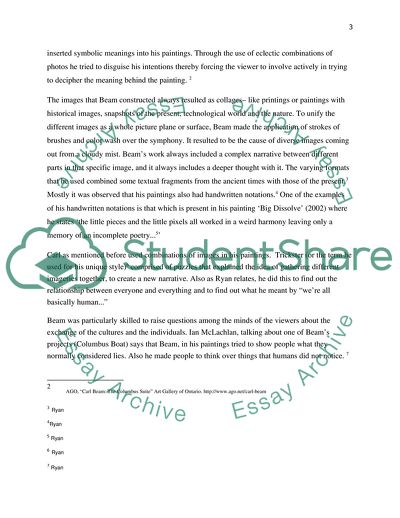Cite this document
(Carl Beam's Major Painting Themes Essay Example | Topics and Well Written Essays - 2250 words, n.d.)
Carl Beam's Major Painting Themes Essay Example | Topics and Well Written Essays - 2250 words. https://studentshare.org/visual-arts-film-studies/1735733-carl-beam-research-essay
Carl Beam's Major Painting Themes Essay Example | Topics and Well Written Essays - 2250 words. https://studentshare.org/visual-arts-film-studies/1735733-carl-beam-research-essay
(Carl Beam'S Major Painting Themes Essay Example | Topics and Well Written Essays - 2250 Words)
Carl Beam'S Major Painting Themes Essay Example | Topics and Well Written Essays - 2250 Words. https://studentshare.org/visual-arts-film-studies/1735733-carl-beam-research-essay.
Carl Beam'S Major Painting Themes Essay Example | Topics and Well Written Essays - 2250 Words. https://studentshare.org/visual-arts-film-studies/1735733-carl-beam-research-essay.
“Carl Beam'S Major Painting Themes Essay Example | Topics and Well Written Essays - 2250 Words”. https://studentshare.org/visual-arts-film-studies/1735733-carl-beam-research-essay.


